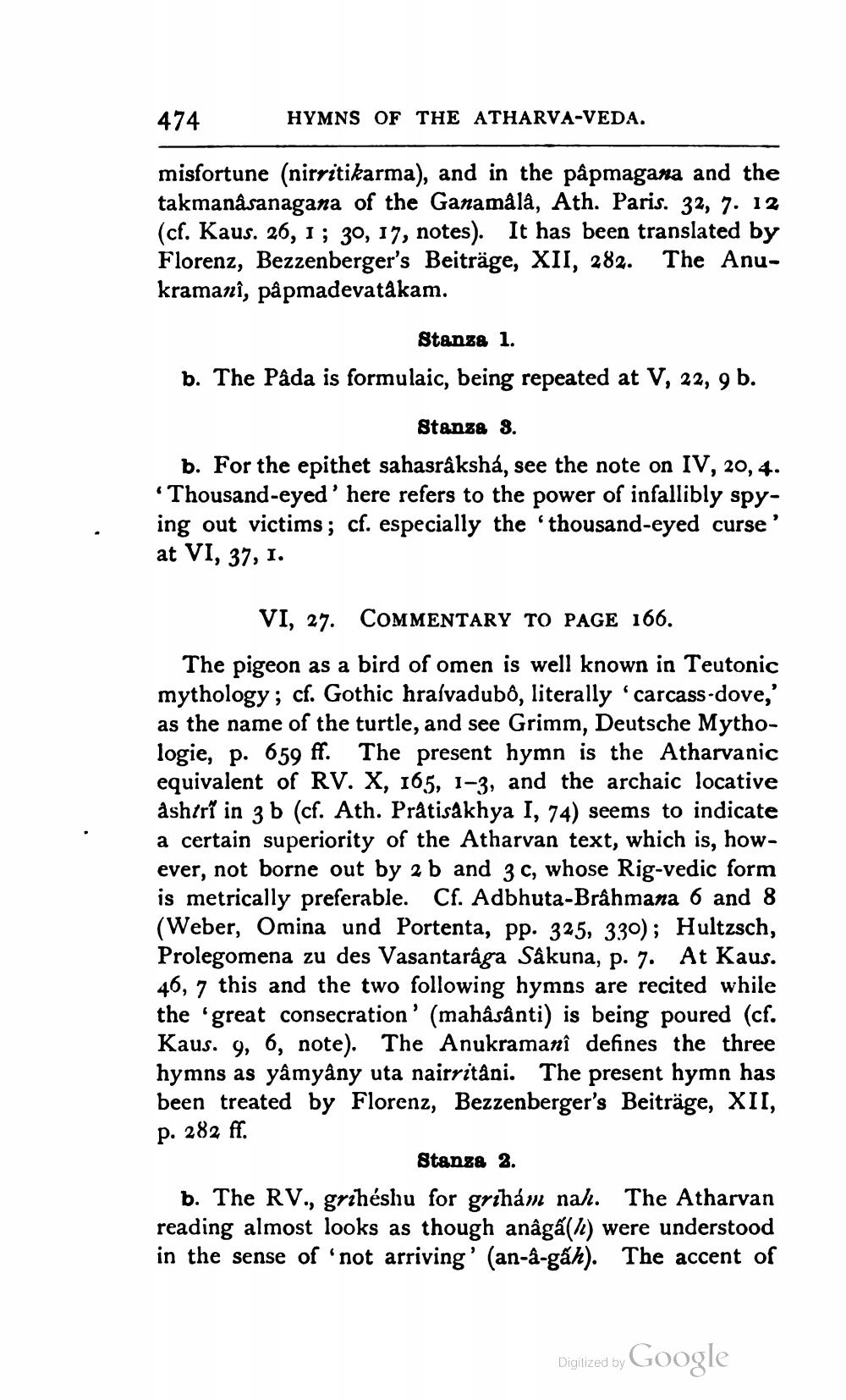________________
474
HYMNS OF THE ATHARVA-VEDA.
misfortune (nirritikarma), and in the papmagana and the takmanâsanagana of the Ganamåla, Ath. Paris. 32, 7. 12 (cf. Kaus. 26, 1; 30, 17, notes). It has been translated by Florenz, Bezzenberger's Beiträge, XII, 282. The Anukramani, pâpmadevatakam.
Stanza 1. b. The Pâda is formulaic, being repeated at V, 22, 9 b.
Stanza 8. b. For the epithet sahasraksha, see the note on IV, 20, 4. 'Thousand-eyed' here refers to the power of infallibly spying out victims; cf. especially the thousand-eyed curse' at VI, 37, 1.
VI, 27. COMMENTARY TO PAGE 166. The pigeon as a bird of omen is well known in Teutonic mythology; cf. Gothic hrasvadubo, literally 'carcass-dove,' as the name of the turtle, and see Grimm, Deutsche Mythologie, p. 659 ff. The present hymn is the Atharvanic equivalent of RV. X, 165, 1-3, and the archaic locative ashtri in 3 b (cf. Ath. Prátisakhya I, 74) seems to indicate a certain superiority of the Atharvan text, which is, however, not borne out by 2 b and 3 c, whose Rig-vedic form is metrically preferable. Cf. Adbhuta-Brâhmana 6 and 8 (Weber, Omina und Portenta, pp. 325, 330); Hultzsch, Prolegomena zu des Vasantarága Sâkuna, p. 7. At Kaus. 46, 7 this and the two following hymns are recited while the 'great consecration' (mahâsânti) is being poured (cf. Kaus. 9, 6, note). The Anukramanî defines the three hymns as yâmyâny uta nairritâni. The present hymn has been treated by Florenz, Bezzenberger's Beiträge, XII, p. 282 ff.
Stanza 2. b. The RV., grihéshu for grihám nah. The Atharvan reading almost looks as though anâgá(1) were understood in the sense of ‘not arriving' (an-â-gåh). The accent of
Digized by Google




